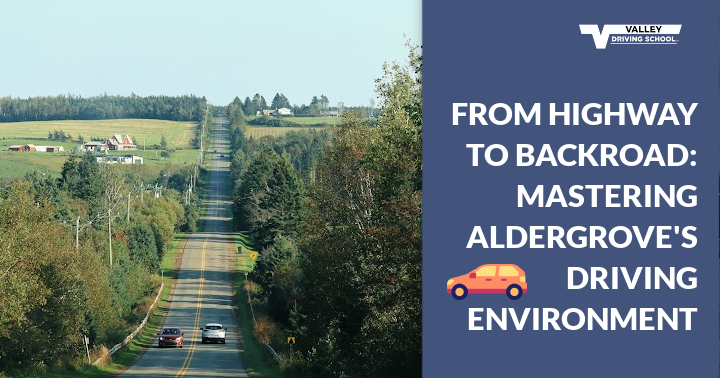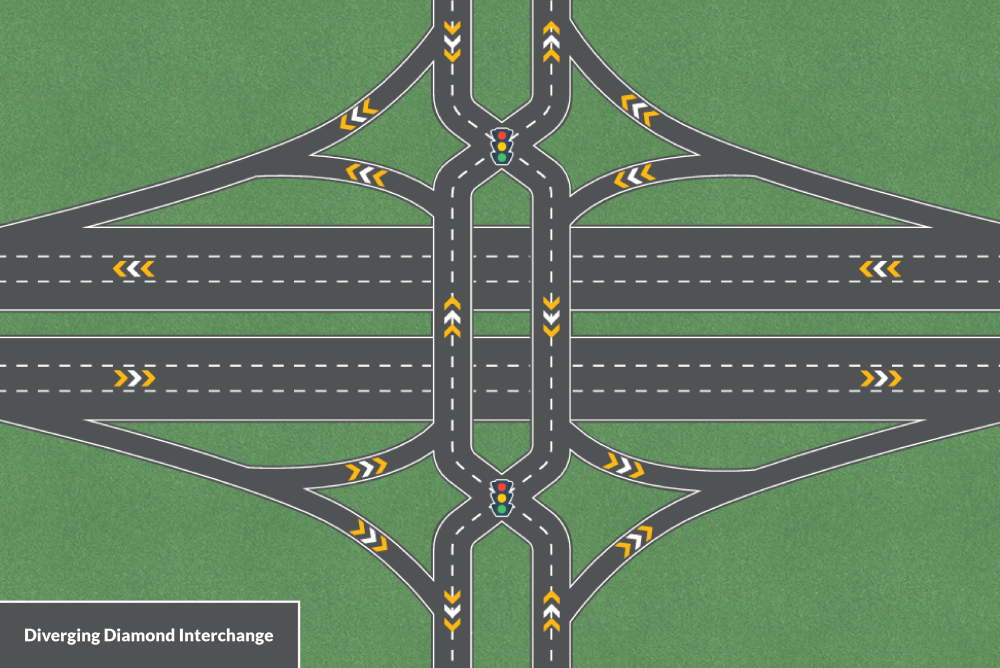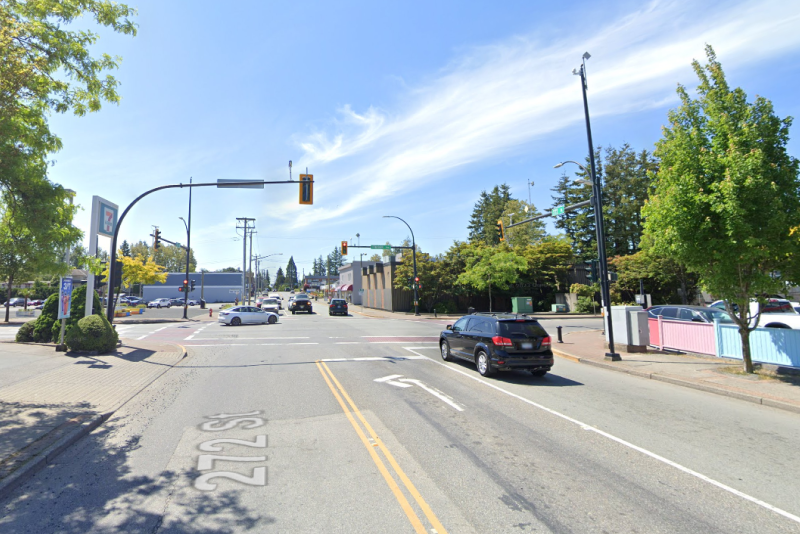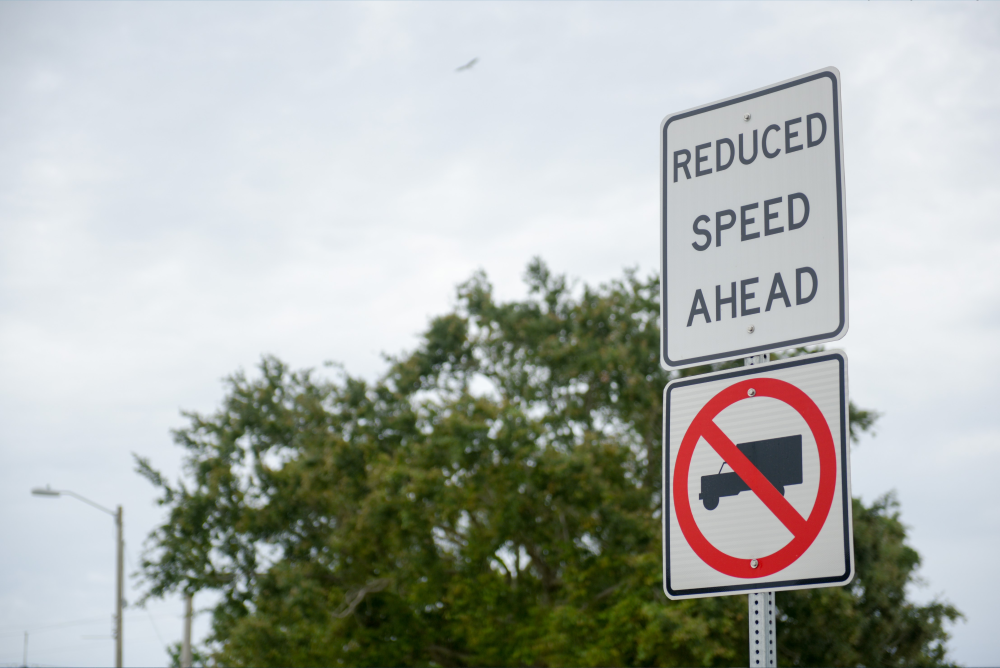Aldergrove presents new drivers with a blend of suburban development and rural heritage and this mix of modern infrastructure and meandering country roads makes it an ideal training ground. Mastering the varied challenges here—from a newly designed highway interchange to winding roads shared with farm vehicles and wildlife—builds a versatile skill set that prepares you for almost any driving scenario across British Columbia.
We’re walking you through some key driving challenges and how to incorporate them into learning to drive in Aldergrove, developing the confidence and practical knowledge you need to become a safe, skilled driver.

Understanding the New Highway 1 Interchange at 264th Street
 The Highway 1 interchange at 264th Street is undergoing significant construction as part of a major corridor improvement program. Traffic patterns are frequently changing due to this construction and drivers should be prepared for temporary lane closures, new signalized intersections, and modified on and off-ramps. Staying up to date by checking sources like DriveBC is a good habit to form. The new design is converting the existing cloverleaf to a "diverging diamond" interchange, which will be the first of its kind in BC. While this will ultimately improve traffic flow, navigating it during the transition requires extra focus.
The Highway 1 interchange at 264th Street is undergoing significant construction as part of a major corridor improvement program. Traffic patterns are frequently changing due to this construction and drivers should be prepared for temporary lane closures, new signalized intersections, and modified on and off-ramps. Staying up to date by checking sources like DriveBC is a good habit to form. The new design is converting the existing cloverleaf to a "diverging diamond" interchange, which will be the first of its kind in BC. While this will ultimately improve traffic flow, navigating it during the transition requires extra focus.
For new drivers, merging onto the freeway can be intimidating, even when you’re navigating a more common interchange design! The key to a smooth and safe merge is advance planning and situational awareness so before you even enter the on-ramp, look for signs and be aware of your surroundings. As you accelerate onto the ramp, a crucial step is to match your speed to the flow of traffic on the highway. Use your mirrors and perform a thorough shoulder check to find a safe gap before signalling and moving into the travel lane. Avoid slowing down on the ramp, as this can confuse other drivers and create a dangerous situation, and instead, accelerate to the same speed as the traffic you are merging into, signal your intention, and smoothly move into the travel lane. The goal is to become an integral part of the traffic flow without forcing other vehicles to brake or swerve.
Mastering Rural Roads and Local Intersections
 Aldergrove's character is defined by its rural landscape, which presents a distinct set of challenges compared to city driving. When you're driving on roads like 272nd Street and 16th Avenue, the rules of the road are the same, but the context requires a different mindset.
Aldergrove's character is defined by its rural landscape, which presents a distinct set of challenges compared to city driving. When you're driving on roads like 272nd Street and 16th Avenue, the rules of the road are the same, but the context requires a different mindset.
The intersection at 272nd and 16th provides a great opportunity to practice a classic four-way stop. When you approach a stop sign, you must come to a full and complete stop before the white stop line. At a four-way stop, the right-of-way is determined by who arrived and stopped first. If two vehicles arrive at the same time, drivers must yield to drivers on the right - if there is no driver on your right, then you have the right-of-way! On other rural roads in the area with two-way stops, you may encounter limited visibility due to the presence of tall hedges, barns, or trees. In those cases, you may need to creep forward slowly and cautiously after your initial stop to get a clear look at oncoming traffic. It is also important to practice judging the speed of oncoming vehicles before proceeding across the intersection, as they may be traveling faster than you expect.
Drivers should be vigilant for the unique characteristics of rural driving, including sharing the road with all types of other road users. Be on the lookout for slow-moving - and often wide - farm vehicles such as tractors and combines, which may take up more than their share of the road. While the BC Motor Vehicle Act allows you to pass a slow-moving vehicle across a solid yellow line when it is safe to do so, you should never attempt a pass unless you are absolutely certain you have a clear path and sufficient time. Always yield to oncoming traffic, even if you think it's "your turn" to proceed. It is also illegal to use the road's shoulder to pass or as a driving lane.
Another key consideration is the safety of cyclists and horseback riders, who are a common sight on rural roads. According to BC law, you must provide a minimum safe passing distance of one metre on roads with a speed limit of 50 km/h or less, and 1.5 metres on roads over 50 km/h. Giving these road users ample space. and being prepared to slow down is a good practice as they are often traveling much slower than your vehicle and have less protection.
Finally, be aware of Aldergrove’s many short, winding rural sections through gullies. These often involve downhill sections leading to a small bridge or a stream, with a sharp bend into an incline on the way out. Be particularly cautious in rain, frost, or snow, as these surfaces can become slippery, and the road conditions may change quickly. It is recommended to adjust your speed, anticipate changes in elevation, and be mindful of reduced visibility around sharp bends.
Navigating Aldergrove's Changing Speed Zones
 One of the biggest challenges for new drivers in Aldergrove is the rapid change in speed limits. A road like Fraser Highway can have a speed limit of 60 or 80 km/h in some stretches, but can suddenly transition to a school or playground zone with a limit of just 30 km/h. It’s crucial to pay close attention to street signs and be prepared to adjust your speed instantly. This skill is vital for anticipating transitions between urban and rural settings, where the absence of sidewalks, streetlights, and dedicated bike lanes requires a heightened level of awareness. As you navigate through both rural and city roads, watch ahead and scan along the roadside for signs indicating changes to the road rules.
One of the biggest challenges for new drivers in Aldergrove is the rapid change in speed limits. A road like Fraser Highway can have a speed limit of 60 or 80 km/h in some stretches, but can suddenly transition to a school or playground zone with a limit of just 30 km/h. It’s crucial to pay close attention to street signs and be prepared to adjust your speed instantly. This skill is vital for anticipating transitions between urban and rural settings, where the absence of sidewalks, streetlights, and dedicated bike lanes requires a heightened level of awareness. As you navigate through both rural and city roads, watch ahead and scan along the roadside for signs indicating changes to the road rules.
-
Practicing in varied environments can provide a huge advantage for new drivers and an experienced Car Instructor in Aldergrove can use the local landscape to create targeted, practical lessons. They can guide you through the new highway interchange, help you practice smooth acceleration and merging, and use the rural roads to teach you how to handle limited visibility and unexpected hazards. An instructor can also provide specific drills for navigating the winding gullies, helping you learn to manage speed and control on downhills and inclines.
For more expert advice to help you prepare for your road test, be sure to check out our other blogs, such as Tips for Mastering the Lane Change and 5 Best Practices for Safe Freeway Driving.
